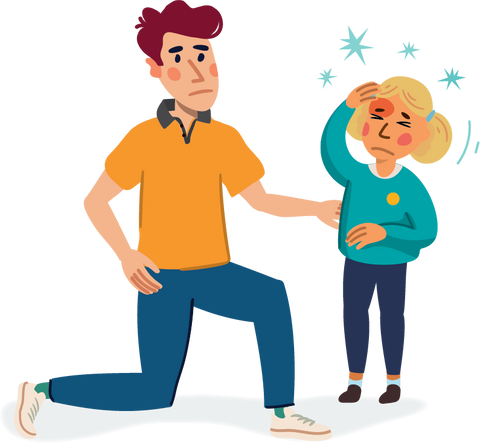Head Injury

Symptoms of head injury include drowsiness, confusion, headache, altered vision, shock, seizure, vomiting, amnesia, bleeding and loss of consciousness.
1. Assess patient’s conscious state and level of injury.
2. Call Triple Zero (000) for an ambulance if a fall, impact or high speed injury, significant bleeding or concussion symptoms are present.
3. Place in recovery position if breathing normally but unconscious or semi-conscious. Prepare for CPR if conscious state deteriorates.
4. Cover ear or nose discharge with sterile dressing but do not pack.
5. Cleanse superficial wounds and apply sterile dressing.
6. Keep patient warm and continue to monitor and reassure until ambulance arrives.
Frequently Asked Questions
How do I assess the level of a head injury? There are 3 levels of head injury: mild, moderate and severe. A mild bump or scrape can safely be treated at home. Moderate and severe head injuries typically involve a fall from height, heavy bleeding, or impact by force or at high speed, and require urgent medical attention. Every head injury should be assessed for concussion.
How do I identify a suspected concussion? The Concussion Recognition Tool 5 (CRT5) helps identify a suspected concussion with 'red flag' signs and symptoms. Learn more here.
What other resources can help me assess a head injury? The HeadCheck concussion app is an excellent resource for school nurses, first aiders, trainers and parents to recognise the signs and symptoms of concussion, and manage recovery.